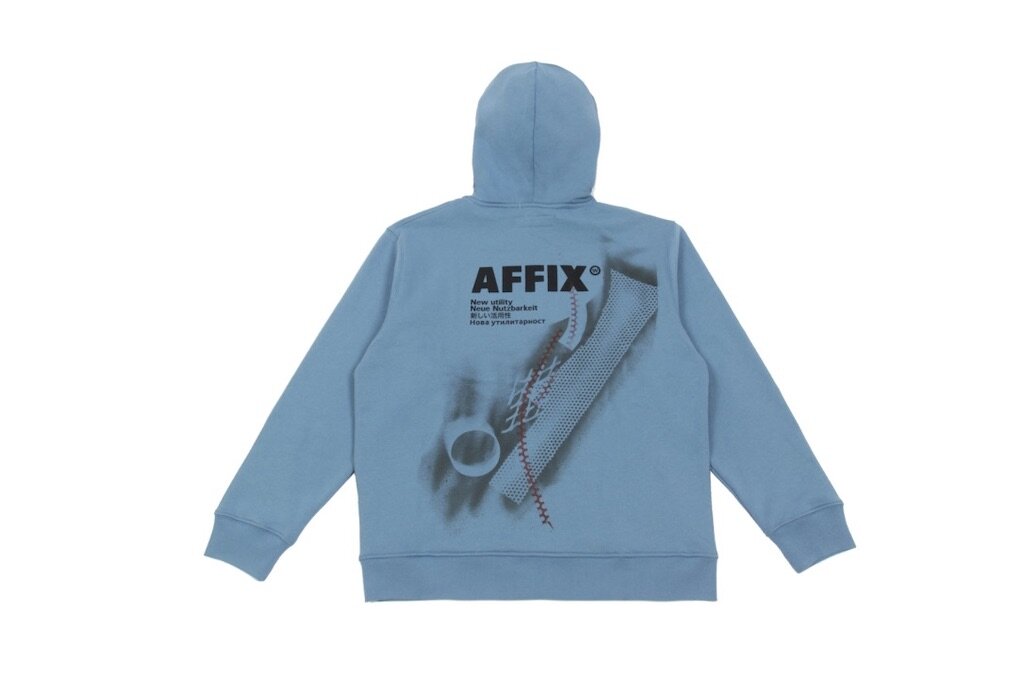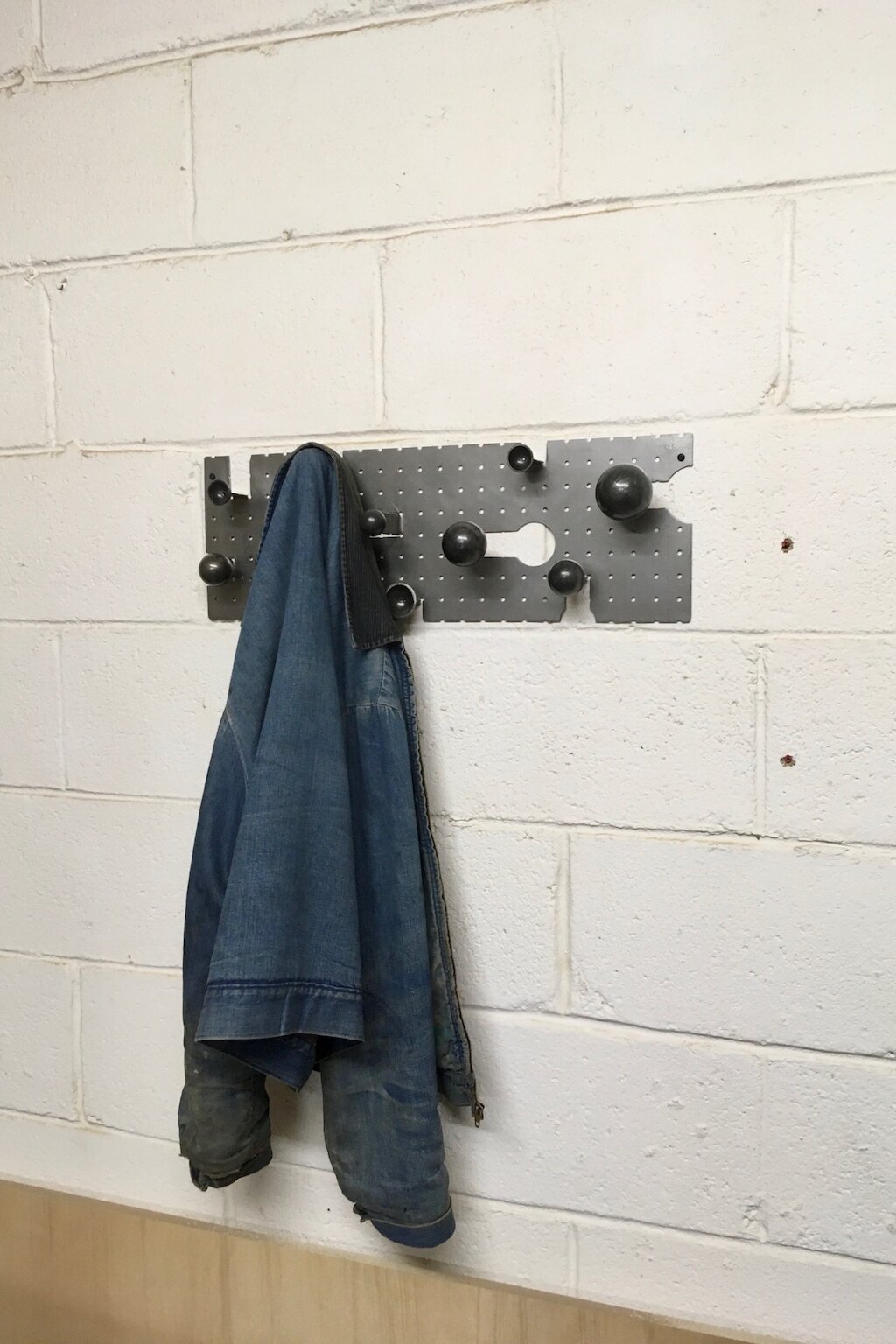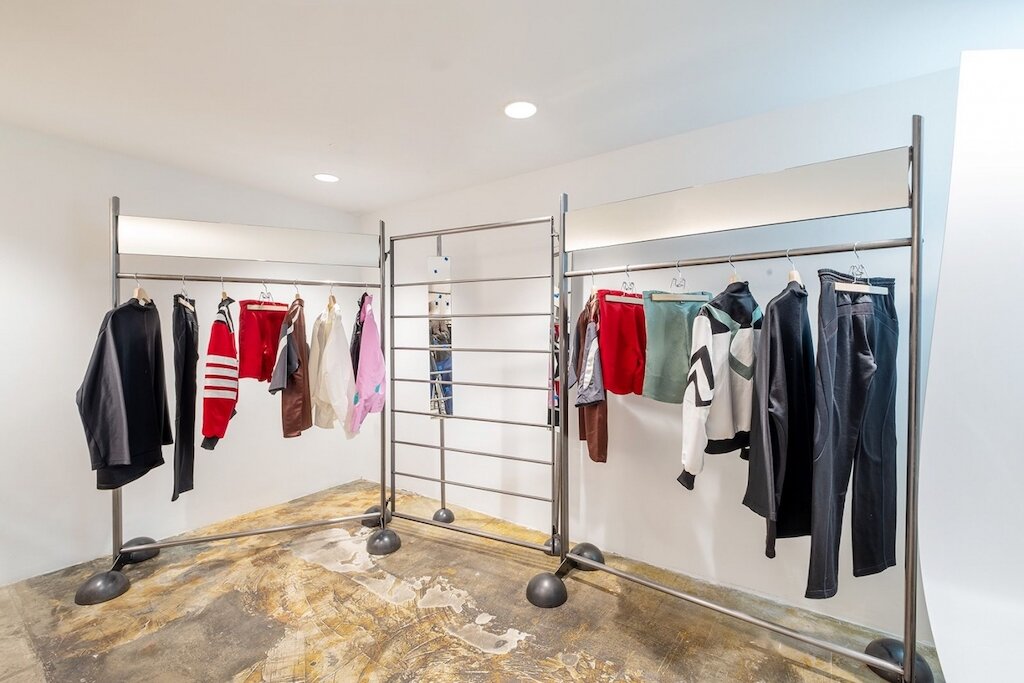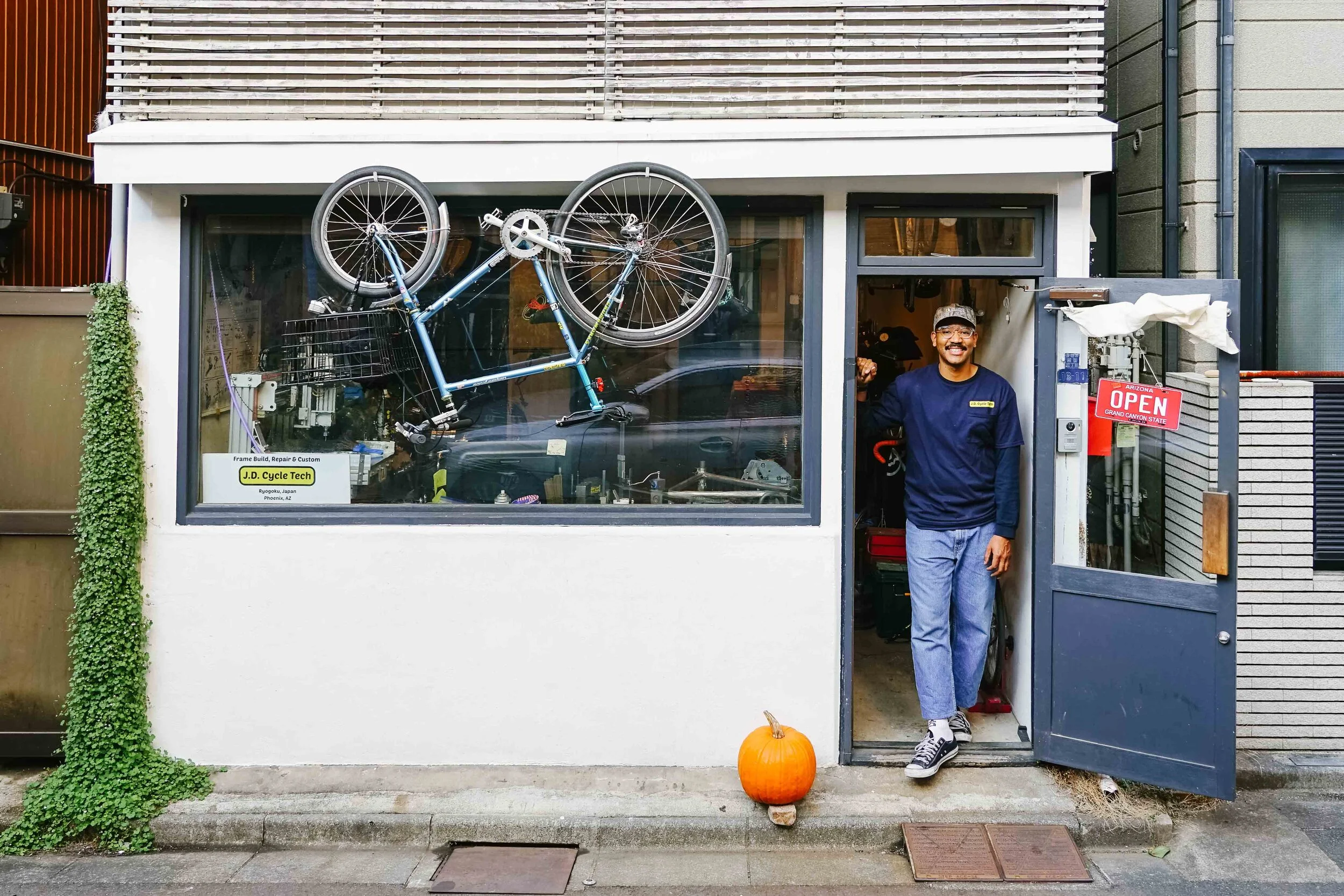TAKIN' A TRIP TO BERMUDA WITH DEAN EDMONDS

A conversation with London-based product and interior designer Dean Edmonds.
After growing up in east England and studying industrial design in the midlands, 33-year-old Edmonds head off to London to immerse himself in the environment his creations will ultimately end up in.
Taking inspiration from Louis Kalff for lighting design and working close to Dieter Rams’ maxim ‘as little design as possible’ Dean’s creations present you with a new idea of how metal can be experienced within spatial design.
His personal style could be best described as a unique juxtaposition, mixing various types of woods and steel together whilst clearly referencing the language of iconic designer Luther Conover but with a rougher finish and execution.
Most of Dean’s works are handcrafted either in his studio in Hackney, London or in his father’s workshop who is a steel fabricator by trade.
Edmond’s aesthetics emphasize on handcrafting and staying true to the raw materials, with a lot of his works barely touching on colouring or if colour is used its only to highlight certain, specific elements.
With most works being made on-demand or purely being one-off custom pieces, a taste of producing product for retail came in 2015 when he designed a table lamp for LA-based home manufacturer ATELIER DE TROUPE.
Back in 2017, Dean Edmonds worked together with renowned designer Kiko Kostadinov on furniture for his 0001 Macintosh collaboration space at Dover Street Market Ginza. The collaborative effort between both stuck, and they’ve worked together repeatedly since on various collections.
Edmonds strives for timelessness and physical durability within his products but admits that his recent work always is the best representation of his mindset.
We spoke with Dean Edmonds about his creative process, inspirations, and current work, as well as his ongoing collaborative work with Kiko Kostadinov.
Hello Dean, please introduce yourself to the Sabukaru network.
Hello, my name is Dean Edmonds I design and make furniture in London UK.
How did your love for design start? Was there a point in your life where you realized the passion you have?
I don’t know that there was a particular point. I would say that the road to where I am now has been fairly organic, I think my personal experiences have made me what I am. I grew up around making with an active interest in how things work and a curiosity for everything. With further education and research, this grew to an obsession with objects, function, and form.
Could you give us a quick rundown about what a typical design process looks like for you? How do you start? What are your thought processes like?
I guess you are referring to something I have been asked to design. In that case, a request is made for a chair, a wardrobe, a coat hook etc.
… from there I consider where it will be used, by who, what its core function is, what material will be suited to this and perhaps why it is that the person is asking me to do this in the first place.
From there I sketch and when happy with that, a technical drawing is then produced before making the final piece. There is always a technical drawing to enable me to go back and re-produce upon request and also to accurately catalogue the item once it has left.
Further to this, I am always thinking of objects and ideas. I fill sketchbook upon sketchbook with ideas starting from observations that I make, some of these things will be made, others developed to suit requests and many I don’t get the chance to pursue further.
What elements define your personal style? What are your influences?
I’d say what stays constant is a respect and admiration of materials, I will never stain a timber for example and often choose the raw finish of the metal. My influences are varied and wide from other designers and artists work to anything that I see in my daily routine, natural, man-made, or even behavioural.
It seems like a lot of your work consists of reused material. Is it more challenging working with used materials than new ones?
I don’t work with used or reclaimed material. I do however repurpose ready-made new components. For example, the Donut stool takes something that is readily available and uses it in a way other than its intended purpose. In this case a component of a car cooling system used as a seat. I find beauty in well-engineered components and industrial materials that some may see as mundane.
For me, it seems natural and perhaps obvious to incorporate these into the objects that I design.
What’s your favourite material to work with and why?
Steel. It is something I have grown up around and have an emotional connection with - the feel, the permanence, the smells of working with it even.
If you need a new chair or desk, do you go out and buy one or do you make it yourself? Is there even anything out there that catches your interest? If so what is it?
The majority of the furniture in my home I have made, the remainder I have slowly collected, pieces by designers I admire. Further to this I never just buy anything... I make a conscious effort to not over-consume. This applies to all aspects of my life I rent a small flat just big enough that it is comfortable and I try to have as few possessions as possible.
What is an example of a mistake you made on a project, how did you handle it, and what did you learn from it?
When making, naturally problems arise with material behavior or a miscalculation etc.
However, these are amended within the making process. Often the items I make are one-offs, effectively prototypes so it is always a learning curve. That said I will never deliver something that I am not happy with.
We saw you working with Affix on products, ranging from custom dyed hoodies to tops that feature your metal applications?. What was it like for you working with garments? And is there more to come in the future?
I customize my own clothes, the pieces for Affix were a further exploration of what I had been doing for myself. I think the piece with metal that you are referring to is my personal jacket. All collaborations come organically and spontaneously so you never know.
Is there a specific design or piece out of your creations that you would like to highlight?
I’m quite happy with the “Hang Loose” coat racks and “Donut” stools. I think at whatever point you ask that question the most recent thing I have completed would be the answer as that would be the best representation of my current mindset.
On what project are you currently working on? Can you give us an insight?
A few things, but what I’m most excited about seeing finished currently is a sofa, dining table and set of shelves for the same home. Each in different materials and approach.
During the past years, you designed showrooms and store installations for Kiko Kostadinov's eponymous label. How did you achieve to support Kostadinov’s vision with your installations?
What I have produced for Kiko has been a response to his work and themes, developing his initial thoughts for the installations into a tangible functional form.
How is it like to work with such a talented designer? And how did the connection come about?
We came to work together through a shared acquaintance and everything I have done with Kiko has been done collaboratively. I don’t generally work so collaboratively but with Kiko, I do have genuine respect for what he does and enjoy working together in such a way.
Do you have an inspiration when it comes to your work? We see parallels between your designing and Shiro Kuramata, Japanese interior designer, when it comes to usage of mesh and steel. Did Kuramata influence you to work particularly with these materials?
My inspiration is very broad, I think everything I see on a daily basis can be the starting point for something. As mentioned earlier metal and metal fabrication is something I have grown up with so these materials were natural for me to use and in fact, were on hand from the beginning.
I too see the parallels between our work but I wouldn’t say my choice of steel as a medium was influenced by the work of Kuramata. What interests me more with Kuramata is the design of whole spaces and how each element of the spaces he designed work together, all of the material choices, not just the steel.
We’re facing multiple challenges such as the climate crisis which has a massive effect on our choice of materials as well as the lack of affordable housing. How do these current and future problems influence your work and how do you see the future of interior design?
I think the most important thing is to not over-consume. This applies to everything, food, clothing, objects. For me, it is always important to purchase well made, well-functioning items that will not be thrown away that you can keep, pass on or repurpose. I would hope that the objects I create fall into this category.
A classic ending, what comes next for you Dean?
Whenever I’m asked how I am I generally reply "the same as always", I mean this in a positive way I’m happy with how we work and seem to receive a steady stream of new and interesting projects. I would love to see some of my designs go into a larger form of production, but that said I am also happy to continue as I am.
Thank you for your time!
About the authors
Juri is a philosophy and art history student and writer based in Nurenberg, Germany. He is specialized in sustainability fashion and design.
Jon is a content manager and writer based in Stuttgart, Germany. He specialises on rain jackets, functional clothing, Arc’teryx, and photography.
























